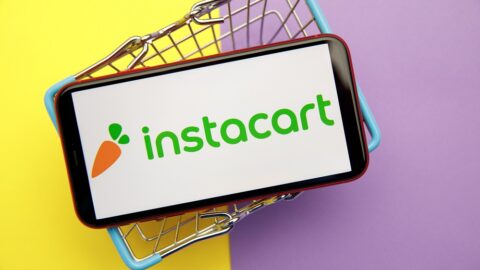In the increasingly crowded mattress category, every marketing dollar has to work overtime. Resident gets the most out of its $100 million marketing budget with an unrelenting focus on consumer data — an algorithmically powered analysis of who a prospective customer is and what actions he/she takes. “Our key differentiator in this competitive landscape is that we’re a marketing and data company, and we know how to acquire customers in a very cost-efficient way,” said Gil Efrati, CMO of Resident in an interview with Retail TouchPoints.

Resident, which sells several brands of mattresses both online and through 1,500 brick-and-mortar stores, has enjoyed a steep growth curve. The retailer climbed from $40 million in 2017 revenues to $250 million in 2018, and “healthily crossed the $300 million mark for 2019,” according to Efrati. He shared details on how the company first identifies and then targets would-be mattress buyers, using marketing vehicles that include digital, social, television and even direct mail.
Retail TouchPoints (RTP): You’ve said the fact that Resident is a marketing and data company is your key differentiator. What do you mean by that?
Gil Efrati: Everything we do is fueled by data; it’s our core competency. In fact, I oversee both the marketing team and the Israel-based data team. We have built our own data stack, and it’s the force behind the company.
Our biggest use of data is identifying when the customer is in the market — along with the recognition that today, the customer is the channel. If someone bought a mattress two years ago and they aren’t going to change it, you don’t care about them now — you care when they are in the market for a mattress.
RTP: From a marketing perspective, what are the most valuable uses for the data Resident collects and analyzes?
Efrati: We are able to aggregate a lot of signals, in part from close relationships with Google and Facebook, because we’re large advertisers. We also enrich this existing data from third parties, even down to things like a weather API. On rainy days e-Commerce works better, because people stay at home and buy online. When you plug all of those data sources into the ‘brain’ of our data warehouse, you’ll understand who is more likely to buy, and when.
For a company like ours, a lot of the work being done is understanding propensity to buy after the first visit to the site. We don’t want to waste money on an audience that isn’t likely to buy, and we want to double down on those who are most likely to buy.
RTP: What are some of the data points you use to determine how likely someone is to buy?
Efrati: It’s about both who they are and what actions they take. We might start with whether the person came to our site from Google versus Facebook. Then there’s user data — is the customer from Virginia or California? We know some states and cities have higher conversion rates than others. Another truth of the Internet is that people who have iPhones tend to have higher incomes and higher conversion rates.
Then we would look at how much time the person spent on our site, what they clicked on and what they searched for. We use advanced regression models to determine which of these signals best predicts buying behavior. Additionally, those signals can mean one thing if you’re the customer from Virginia, and something else if the customer is from California. We can go so many levels deep that it’s truly never-ending.
RTP: If your analytics indicate someone is a likely purchaser, what do you do then?
Efrati: We’ll try to reach you with any means that we can. We can target you with programmatic buying, streaming television or even a direct mail postcard. If we feel like you’re a prospect for us, you’re going to hear about it.
RTP: With so many different marketing vehicles, how do you track attribution?
Efrati: We map out user journeys using our own tech stack. There are close to a million happy customers across our different brands, so that’s a lot of user journeys — and every user journey is unique, especially when it’s a product that costs $1,000, requires research and is infrequently purchased. Additionally, with user journeys, some channels are more valuable in the upper funnel, the mid-funnel, the lower funnel and during the post-purchase period. We work to map all the journeys into something that’s actionable.
RTP: What are your biggest challenges as a marketer?
Efrati: Even with advanced attribution modeling, the challenge is always, How do we get better with targeting? If I improve the media mix or the attribution model by 5%, that’s a $5 million increase on our $100 million marketing budget. The challenge that everybody has is that Google, Facebook, etc. are getting more expensive, so just to maintain the same performance you have to be better than you were last month. How do you resonate better with customers? How do you tell the story better? That’s more of the ‘art’ when you talk about the art and science of marketing.
RTP: How closely does marketing work with other departments at Resident?
Efrati: We’re a startup company and we don’t have that many employees, so essentially everyone talks to everyone. Everyone is always active on Slack, and we’ve established a Customer Success Feedback channel there. Marketing is one of the first to jump on that channel to find out if we can leverage it. A lot of what we do on the marketing and data fronts is based on that constant feedback loop from customers; in fact, we’re planning to launch some new products this year based on customer feedback.
Plus we have a very large, 1,500-store footprint in retail, so the retail distribution team needs to be very coordinated with the marketing, creative and data teams.
RTP: What would you say are some of your biggest success stories as a marketer?
Efrati: We’ve had a few really great marketing campaigns, including the ‘Make America Sleep Again’ campaign, which won a YouTube Ad of the Year award in 2018, as well as our most recent campaign featuring ‘motivational sleeper’ Yawn Yawnson. Every now and then I enjoy going to the video page and reading the comments — it really makes us proud as a team.
Mostly though it’s everything we’ve built around data. We keep finding ways to leverage that data for marketing; that’s what makes us special.













